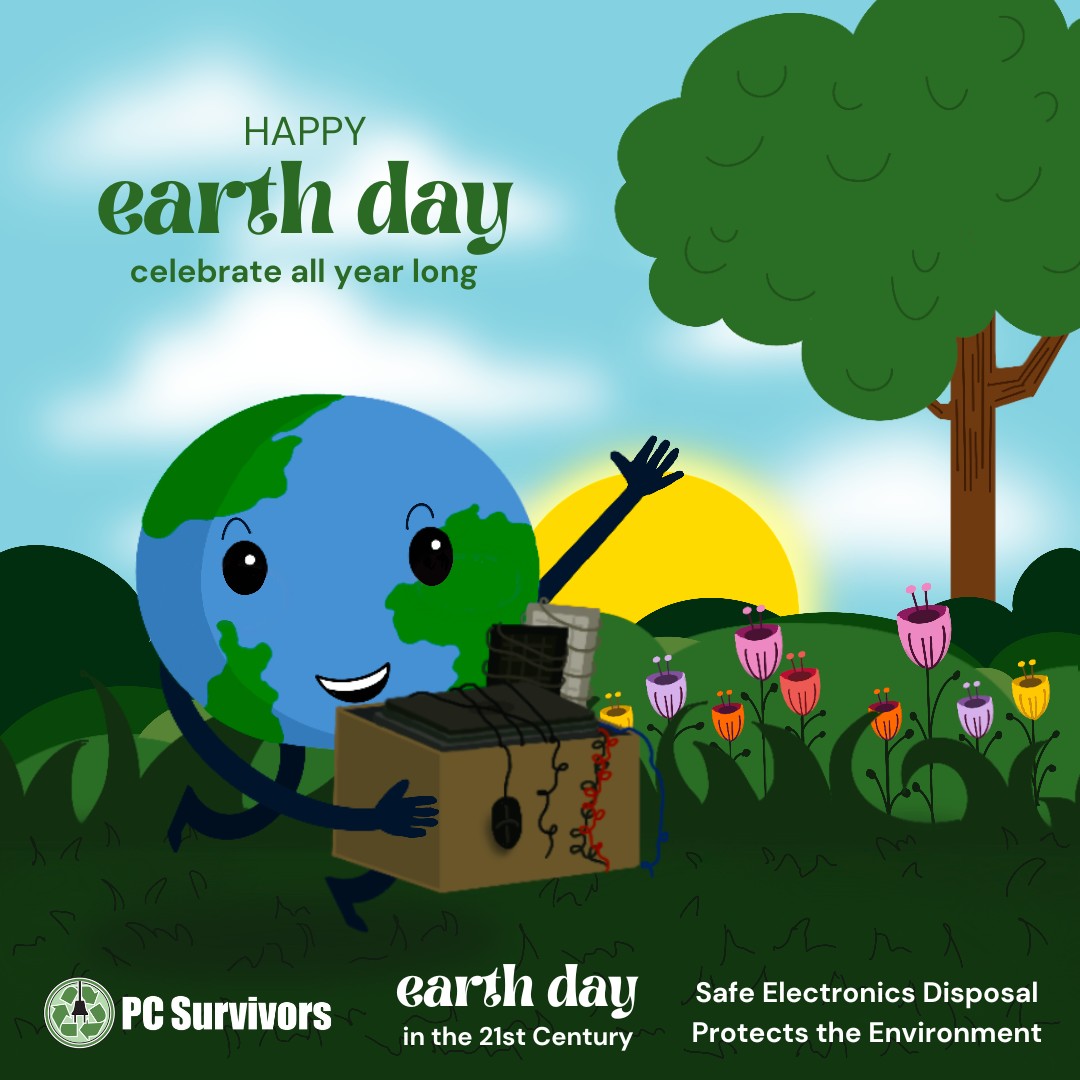Earth Day in the 21st Century.
Safe Electronics Disposal Protects the Environment.
In 1970, Senator Gaylord Nelson and Congressman Pete McClosky teamed up with activist Denis Hayes to raise environmental awareness in United States. In an effort to maximize impact on college campuses, the first Earth Day was scheduled for April 22 — in between most school’s Spring Break and final exam schedules.
This strategic timing paid off. An estimated 10% of the entire American population came out to show their support. Their efforts helped shaped the Earth’s future with the formation of the Environmental Protection Agency in 1970 as well as the passage of the National Environmental Education Act, Occupational Safety and Health Act and Clean Air Act, Clean Water Act, Federal Fungicide and Rodenticide Act, Endangered Species Act and that soon followed.

Of course, the work of a conservationist is never complete. The world has changed and so has its environmental issues. Today, one of the most significant threats to human health, ecosystem balance, water purity and air quality is e-waste.
Less than 20% of all the world’s e-waste is accounted for by reputable electronics recyclers. What happens to the other 80%? Broken, obsolete and otherwise unwanted devices most often end up in long term storage, a landfill or unregulated extraction operations — all of which contribute to environmental degradation on a massive scale.
This year we encourage you to help bring Earth Day into the 21 st century by spreading awareness about how safe electronics disposal helps to protect the environment. We will outline some specific challenge that we face as well as potential solutions going forward.
Landfills
Computers, cell phones, printers and other electronic devices in standard trash cans and dumpsters often find their way to a landfill, where they will remain indefinitely. Animals, ecosystems and people are losing valuable real estate to this toxic practice. The estimated space taken up by landfills is the United States alone is 1,800,000 acres and growing.
E-waste in landfills and e-waste that is illegally dumped, releases a laundry list of toxic chemicals into every part of the environment, including lead, mercury, cadmium and brominated flame retardants — just to name a few. These substances travel through cracks in landfill liners and permeate nearby ground water. From there, local soil, plants and animals are contaminated. Serious health consequences develop in both humans and animals that consume the resulting tainted produce and meat.
Long Term Storage
Letting your old electronic equipment collect dust around your office is not much better than having it sit in a dump. Your e-waste is full of finite resources that can be reused when properly recycled. Modern techniques boast high extraction rates and low environmental impact. Reclaimed metals can be up to 1000% more energy efficient ones comprised of virgin ore and produced with 80% less carbon emissions. Additionally, the practice of holding on to unused electronics stokes demand for new mining projects and unregulated e-waste extraction operations.
Unregulated Extraction Operations
No consumer or business knowingly hands their old laptop or other electronic devices over to be irresponsibly burned (we hope). Oftentimes, well-intentioned individuals and organizations unknowingly work with unscrupulous actors who profit at the expense of the environment — brokering bulk e-waste without any concern about buyer qualifications or international regulations. From there, the e-waste is primitively processed by means of burning. The fires spread toxic chemicals in the air breathed by local men, women and children, then make their way into the atmosphere.
What Can You Do for Earth Day?
Every one of us can play a role in solving the world’s e-waste problem. You can start by being more mindful when replacing equipment. Extending the lifespan of your technology can help control the rate at which e-waste is produced.
Consider repurposing older devices. For example, instead of going out to buy the latest e-reader, you can use an outdated Chromebook to enjoy your e-books on. Old cellphones can make great MP3 players as well.
Have a disposal plan in place for your devices before they reach their end of life. This is best achieved by working with reputable electronics recycling professionals. Do your homework. A few qualifications worth enquiring about include membership to NAID (The National Association for Information Destruction) as well as certificates like RIOS (Recycling Industry Operating Standard) and the updated R2v3 for environmentally sustainable recycling practices.
At PC Survivors, we take pride in making the Earth a greener place year-round, one customer at a time. Call 781-924-3071 or use the contact form here on our website to get started with our team today.







